The full feature review of the Triode Lab 2A3 P-SET RSR monaural amplifiers is now live at Positive Feedback HERE.
As is my custom, I like to give you a 'review sneak peek' into my soon to be published feature articles for Positive Feedback.
This time the feature article 'sneak peek' is about the Triode Lab 2A3 RSR Monaural Amplifiers.
The full article will be published at Positive Feedback in the next few weeks, so stay tuned for more!
Enjoy!
A while back Triode Lab’s Frank Ng asked me if I would like to listen to a pair of his very exclusive - only four pairs are scheduled to be made - cost-no-object, limited edition Triode Lab 2A3 parallel single-ended-triode (P-SET) RSR monaural amplifiers, that incorporated all of Frank’s design insights for state-of-art high-performance SET amplifiers (HERE, scroll down the page).
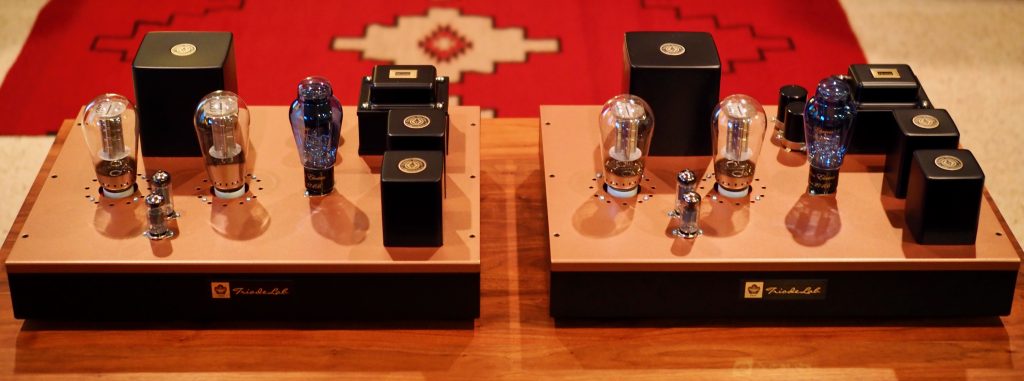
Of course I said, “Yes!” After all, the Triode Lab 45 EVO SET integrated amplifier that I wrote about for you in Positive Feedback Issue 115 was the highest performing amplifier I have ever heard on my Tannoy Westminster Royal SE loudspeakers, so I was more than curious to check out the performance of Frank’s cost-no-object, state-of-art, Triode Lab 2A3 P-SET RSR monaural amplifiers.
Frank thought I would enjoy experiencing the 2A3 P-SET RSR monos ‘Ferrari level’ of sound quality and musicality, along with the added benefits of the extra power they have over the Triode Lab 45 EVO SET integrated amplifier.
The 2 watt per channel Triode Lab 45 EVO SET integrated amplifier has routinely delivered live-like volume levels from my 99 dB sensitive Tannoy Westminster Royal Special Edition loudspeakers on most - but not all - of the albums I’ve listened to.
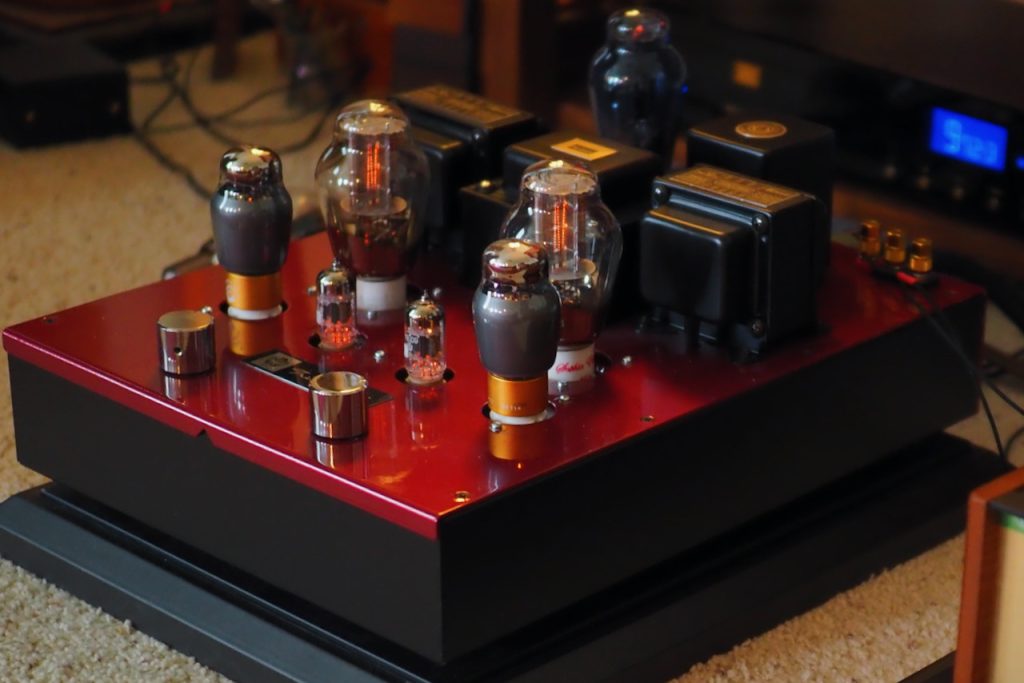
The promise of the 8 watt per channel Triode Lab P-SET 2A3 RSR monaural amplifiers was that I would be able to listen to all my music albums at live-like levels on my Westminsters, in state-of-art SET sound quality, and that has indeed been the case.
The Triode Lab 2A3 P-SET RSR monaural amplifiers actually have more power than I can comfortably use in typical listening sessions with my Westminsters, but it is nice to have the extra power in reserve for those special occasions when its needed.
Practically speaking, 8 watts is generally enough power to drive loudspeakers even at a middling level of sensitivity, starting at around 90dB and up, which opens up the range of loudspeakers that can be paired with the Triode Lab P-SET 2A3 RSR monos considerably compared to the 2 watt Triode Lab 45 EVO SET integrated amplifier.
For example, I briefly substituted a pair of 90 dB sensitive Audio Note (UK) AN-K/SPe loudspeakers (more HERE) for my Tannoy Westminster Royal SE loudspeakers, and the Triode Lab 2A3 P-SET RSR monaural amplifiers easily drove the AN-K/SPes to live-like levels with the volume control on the preamp only about halfway up.
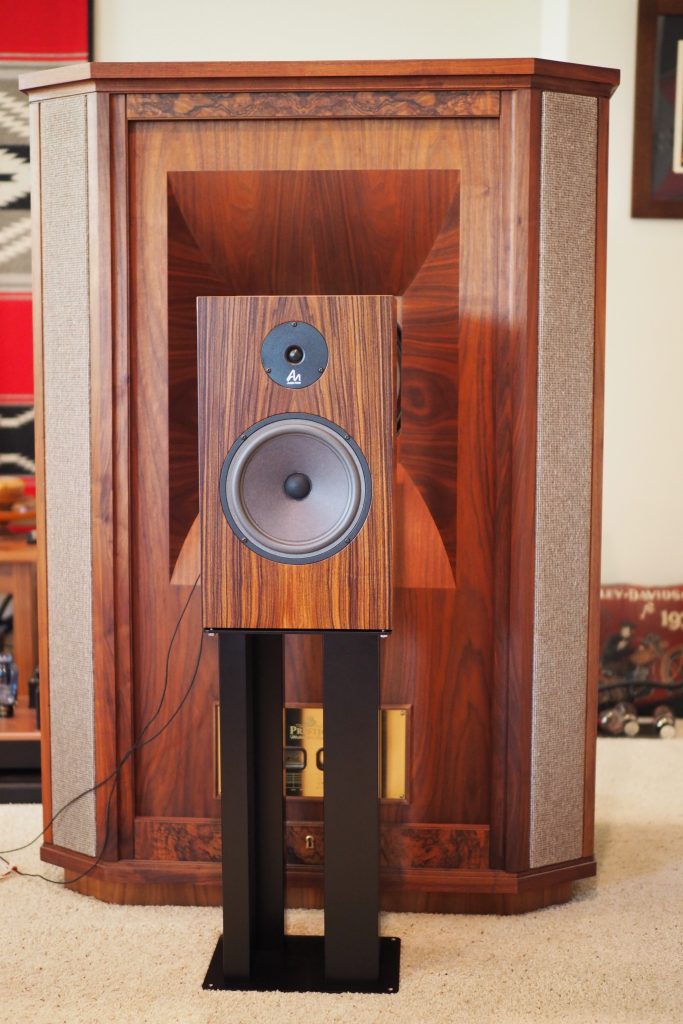
So the moral of this story is that the extra power of the Triode Lab 2A3 P-SET RSR monos over the 45 EVO SET integrated amp means that more audio enthusiasts across a broader range of loudspeaker sensitivities can access the ‘next level performance’ that Frank’s custom amplifiers offer.
Frank Ng and Triode Lab
Frank Ng’s Triode Lab is located in Toronto, Canada, and Frank custom builds each of his artisan amplifier designs to order to best match each customer’s amplification needs.
The proprietary circuitry and build quality of Frank’s amplifiers are indeed impressive, and artfully beautiful.
The highest quality component parts are used in each build, like Hashimoto transformers, Furutech connectors and silver solder, Jensen PIO capacitors (now owned by Duelund Coherent Audio), Mundorf capacitors, etc., and custom choices of automotive quality paint finishes.
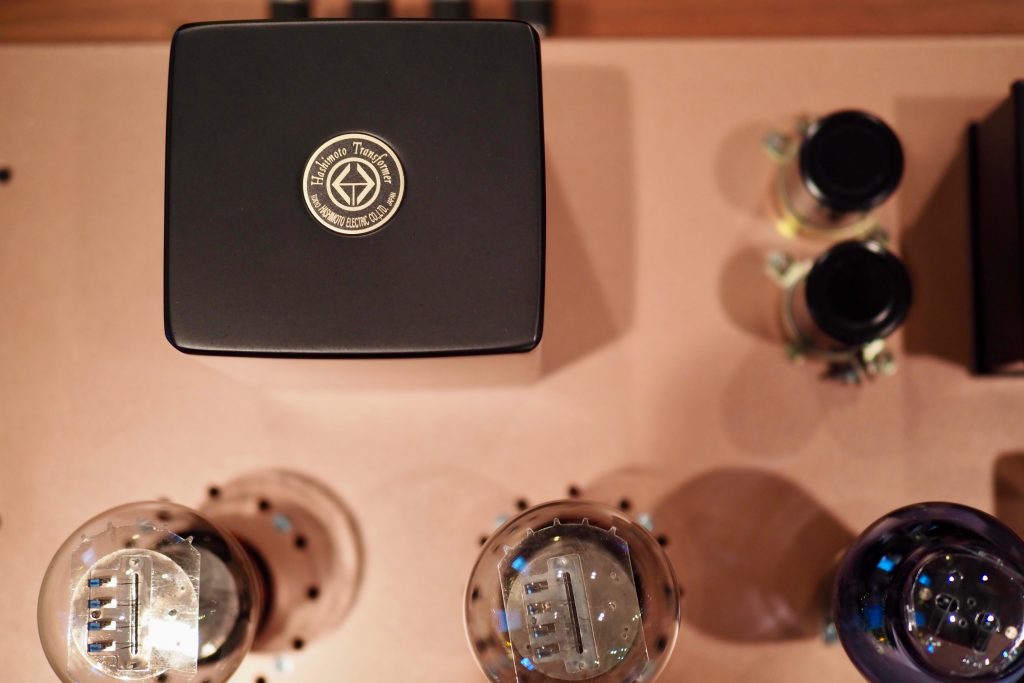
Here’s how Frank’s custom tailoring process typically works: When a potential customer contacts Frank about the most appropriate amplifier for their loudspeakers and personal tastes, Frank will nudge them towards an amplifier model, optimum transformer choices for their loudspeakers, vacuum tube choices, and other options, that Frank’s experience has proven will best meet a particular customer’s needs and personal tastes.
There are also a number of custom upgrade options that customers can choose from if they so wish.
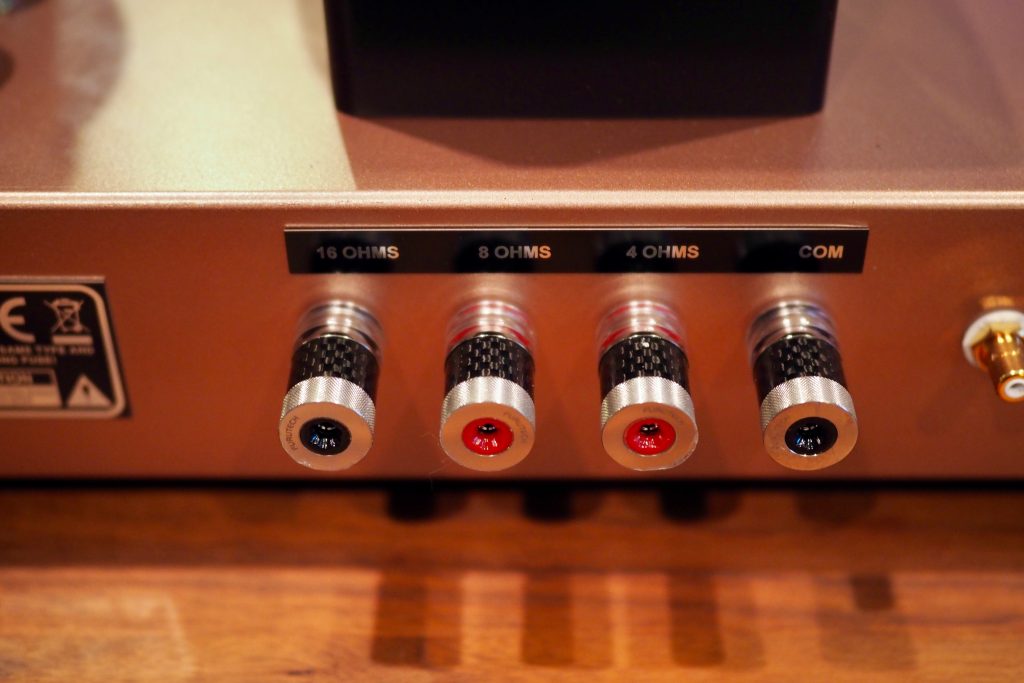
After finalizing the details, the custom build process commences, and a few months later the customer receives a hand-crafted artisan amplifier that is ‘custom-tailored’ to power their loudspeakers to the highest level of performance possible.
For my review of the Triode Lab 45 EVO SET integrated amplifier, Frank had me go through the same process as any customer would. Frank quizzed me about the loudspeakers I would be using with the 45 EVO SET - my 8 Ohm Tannoy Westminster Royal SEs and my 16 Ohm vintage Altecs - and about my personal tastes, then optimized the build based on that information.
The resulting Triode Lab 45 EVO SET integrated amplifier was a magnificent match to my loudspeakers collection, and elevated the performance of my Tannoy Westminster Royal SE loudspeakers to a level of performance that I had not realized they were even capable of.
The combination of Frank’s tailored approach for his Triode Lab custom amplifiers, and his direct-sales business model, allows a customer to experience a custom amplifier voiced specifically for them at a price-point that is within the reach of many audio enthusiasts.
Triode Lab 2A3 Parallel Single-Ended-Triode (P-SET) RSR Monaural Amplifiers
The limited edition Triode Lab parallel 2A3 P-SET RSR monaural amplifiers incorporate all of Frank’s design insights for state-of-art amplification.
The Triode Lab 2A3 P-SET RSR monaural amplifiers are beautifully constructed, and rather sizable with each amplifier being 14 inches deep, 20 inches wide, and 9 inches tall.
I was curious about what the ‘RSR’ meant in the name of the amplifiers, so I asked Frank about it. It turns out that Frank is a race car enthusiast, so he likes to name his amplifiers in honor of famous Ferrari and Porsche race cars.
The Triode Lab 2A3 P-SET RSR monaural amplifiers are named in honor of the Porsche 911 RSR race car, of which Frank is currently building a ‘tribute’ replica that is similar to the RSR in the photo below.
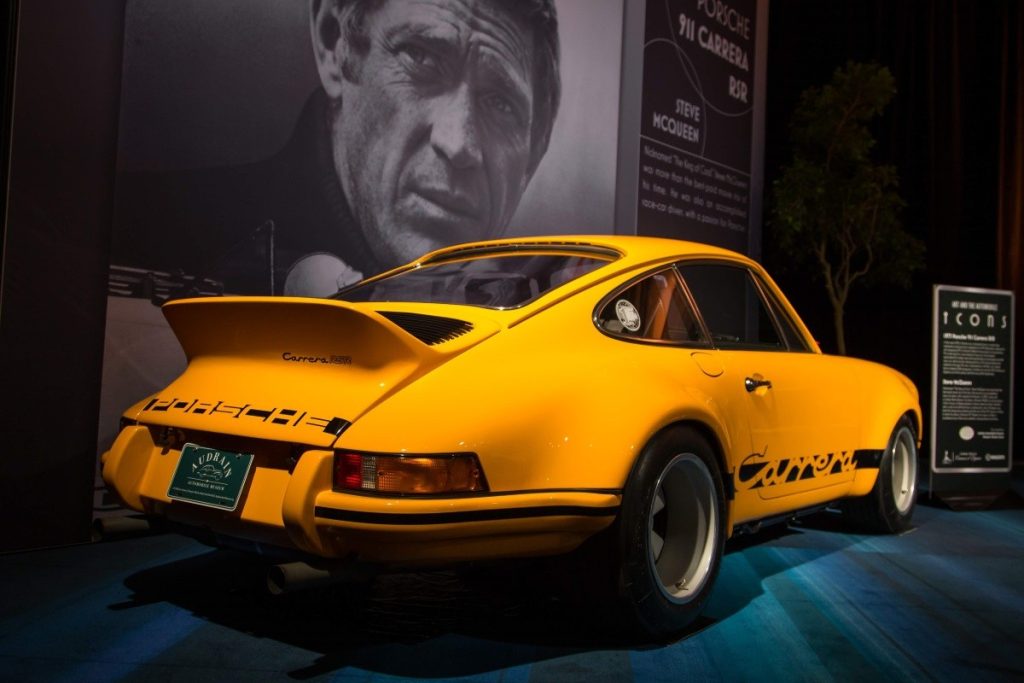
Photo courtesy of Frank Ng. Used with permission.
The idea is that the Triode Lab 2A3 P-SET RSR monaural amplifiers are an ultimate expression of amplifier performance, just as the Porsche 911 RSR was Porsche’s ultimate expression of performance for a GT race car.
Below is the “component build list” for the Triode Lab 2A3 RSR K-1 monaural amplifiers that Frank sent to me, which he thought would best match my loudspeakers and tastes, and which includes all the available upgrade options.
Chassis: Copper metallic powder coat over a pure copper top chassis, electronic black finish over aluminum base chassis.
Components: Hashimoto 30W proprietary output transformers, Hashimoto choke (potted) transformers, Hashimoto power transformers, Finale Pink-Lingu rose-gold plated RCA inputs, Furutech rhodium carbon fiber binding posts (0-4-8-16 ohms), Furutech rhodium IEC AC inlets, Furutech silver solder, Jensen copper foil paper-in-oil, silver leads, aluminum case, coupling capacitors, Mundorf Evo Supreme silver-gold input coupling capacitors, and Mundorf M-Lytic HV E capacitors.
Tubes: Vacuum tubes are not included in the purchase price. If a customer does not have a particular set of tubes in mind, Frank can make a recommendation based on the customer’s preferences.
For this article, Frank chose a vacuum tube complement for the Triode Lab 2A3 RSR K-1 monaural amplifiers similar to what had worked well for the Triode Lab 45 EVO SET integrated amplifier powering my Tannoy Westminster Royal SE loudspeakers: Sophia Electric 12AX7s, Electro-Harmonix 12BH7AEHs, 2.5V Sophia Electric 300B mesh plate tubes, and Sophia Electric Aqua 274B rectifiers.
At the time Frank sent the Triode Lab 2A3 RSR K-1 monaural amplifiers to me, the Sophia Electric 2A3 mesh plate tubes were sold out, so Frank substituted the Sophia Electric 300B 2.5V mesh plate tubes, which have a 2.5 volt filament voltage - same as a 2A3 - that are optimized for use in 2A3 amplifiers.
MSRP : $22,000 USD per pair, limited edition 1 of 4 pairs.
Warranty: 10 years.
Let’s do a ‘walk-around’ of a Triode Lab 2A3 P-SET RSR monaural amplifier.
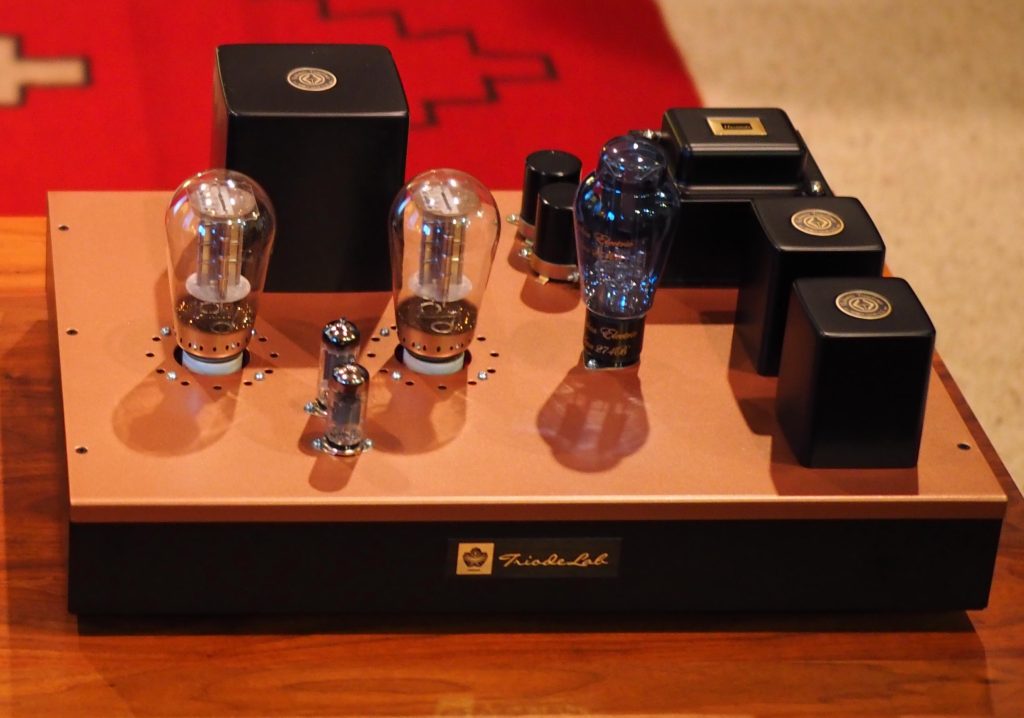
On the front panel of the 2A3 RSR chassis is the Triode Lab badging, and from the front view of the 2A3 RSR you can see the vacuum tubes, Hashimoto transformers, and double Mundorf power supply capacitors arrayed across the copper top-plate.
The front small vacuum tube is the 12AX7 input tube, and just behind it sits the 12BH7 driver / cathode follower. Behind 12AX7 and 12BH7 you see the two paralleled ‘2A3’ tubes, and immediately to their right is the 274B rectifier.
Behind the paralleled ‘2A3’ tubes you see the custom Hashimoto output transformer, and just to its right are the two Mundorf M-Lytic HV E power supply capacitors. To the right of the power supply capacitors is the Hashimoto power transformer, and in front of the power transformer are two Hashimoto choke transformers.
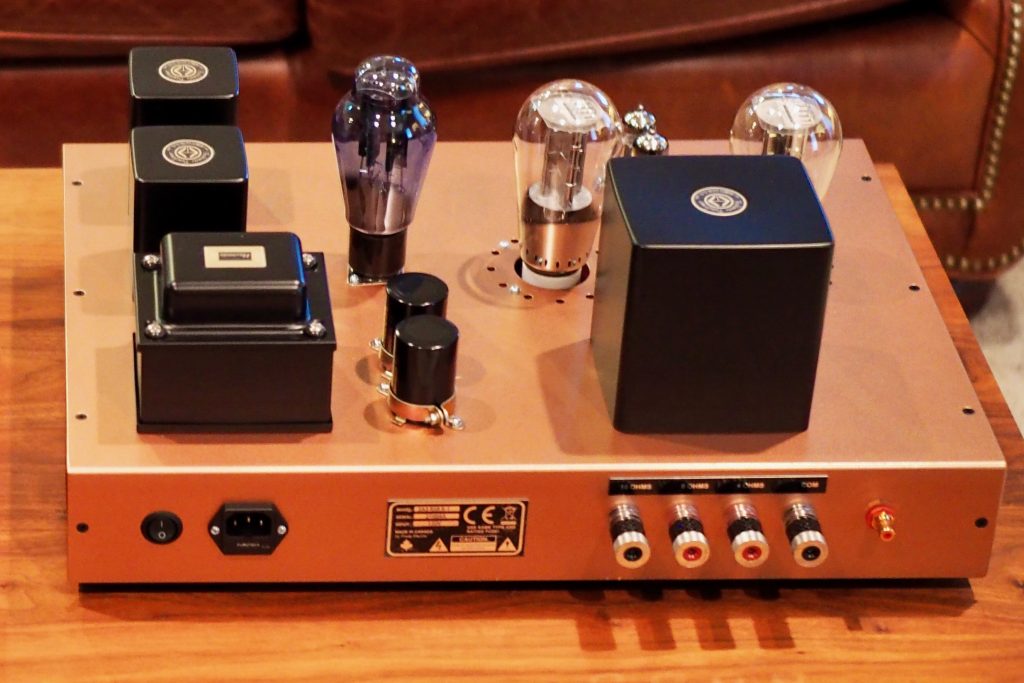
Going around back, from left to right, you see the power switch, the Furutech rhodium IEC AC inlet, the badging for the model, serial number, and input voltage. Then as we continue to the right there are four Furutech rhodium / carbon fiber binding posts for 16 Ohm, 8 Ohm, and 4 Ohm transformer taps, and the negative terminal. To the right of the binding posts is the Finale gold-plated RCA input.
The chassis rests on four rubber footers.
The proprietary circuitry and built quality of Frank’s amplifiers are indeed impressive, even artfully beautiful. The highest quality component parts are used, like Hashimoto transformers, Furutech connectors and silver solder, Jensen PIO capacitors (now owned and manufactured by Duelund Coherent Audio), Mundorf capacitors, and custom choices of automotive quality paint finishes, for example.
As mentioned in the ‘build list’ the 2A3 RSRs’ top chassis is pure copper, so I asked Frank what the benefits are for using copper for the top chassis.
To paraphrase Frank’s answer, even though using a copper top chassis is much more expensive than using aluminum ($2000+ USD more), it is worth the additional expense because it provides a better grounding conduit, a measurably quieter signal-to-noise ratio than aluminum, and from a subjective listening standpoint, copper has better tone and overall sound quality. “Copper just sounds better!”, says Frank.
I asked Frank if he would tell us a little about the design of the Triode Lab 2A3 parallel single-ended-triode (P-SET) monaural amplifiers:
“Like all our other amps, the RSRs are an evolutionary advancement of our modern hifi circuit, instead of recreating the hifi designs of the past.
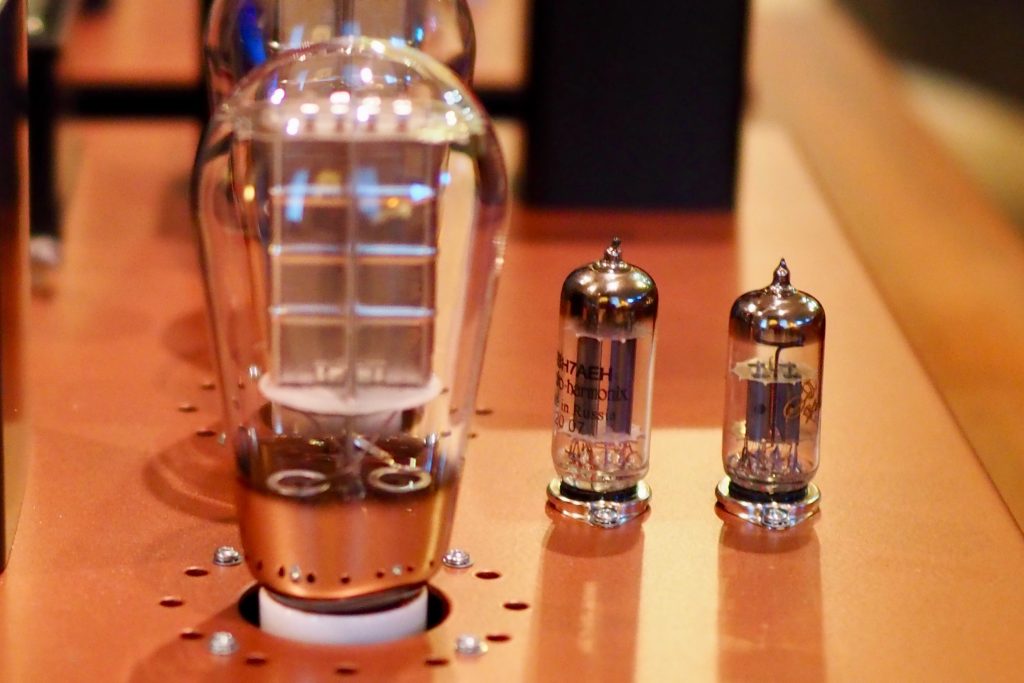
“The RSR uses the 12AX7 as an input supply stage that provides most of the gain. We use the 12BH7 for its low plate resistance, high-current character, good power and good efficiency character, to use as the driver and cathode follower.
“Although we can execute the design with just a 12AX7, the extra help of the 12BH7 will be beneficial when you go with a more complicated design such as the paralleled 2A3 SET. This approach yields better performance with the extra help of the 12BH7, contributing better overall sound even though the 12AX7 does most of the gain stage job.
“The key is always to achieve a perfect balance of play in the circuit, to not over complicate things, but not simplify so much performance is compromised.
“The RSR is based on our evolution of a traditional Class A amplification design, along with some of the best engineered transformers in the world, which were mutually designed between us at Triode Lab and Hashimoto Electric Co., Ltd. in Japan. These custom Hashimoto transformers are mandatory to meet our standard for performance.
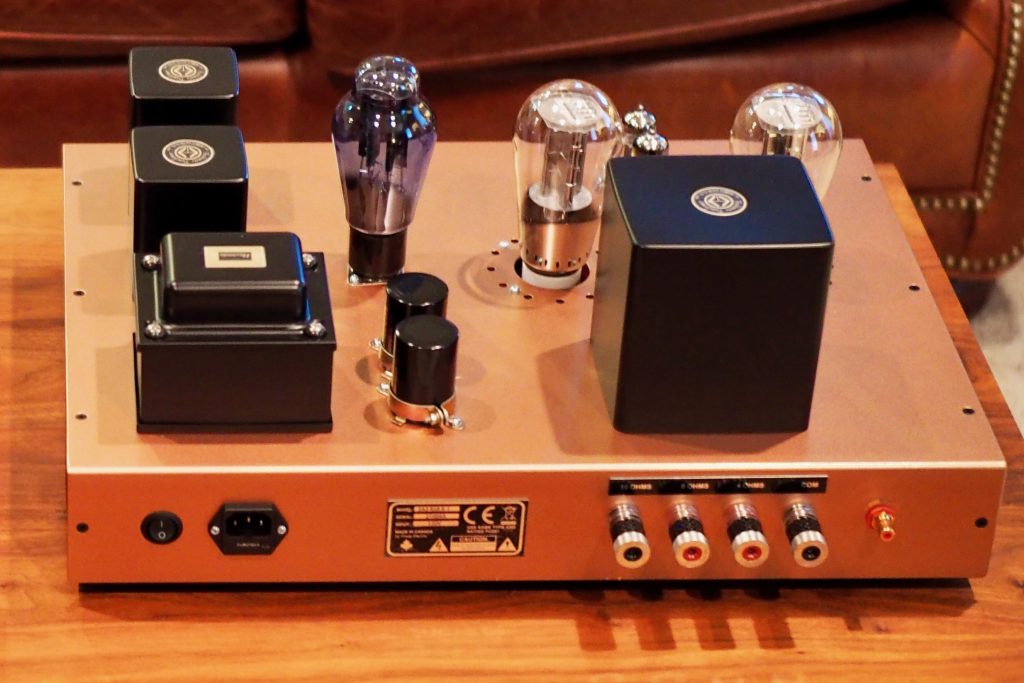
“The biggest weak point in typical SET designs is underestimating the importance of the output transformer. In Class A operation the output transformer is always working at full load and facing magnetic loss all the time, which makes it difficult to reach low bass because it's constantly working against saturation.
“Good output transformers like the Hashimotos make the situation much better. So, without the best engineered output transformers like our custom Hashimoto transformers, you literally can’t reach our intended performance goal for low bass performance.
“Most audiophiles have the impression that the P-SET designs on the market today are pretty much the same, offering average performance compared to SET designs. It is typically true that most of the P-SET designs out there are average in performance, with less clarity, air, transparency, muddy bass, rolled off highs, thicker sound, lessened 3D holographic imaging, and less directness to the sound, that diminishes their sound quality in comparison to a single tube SET design.
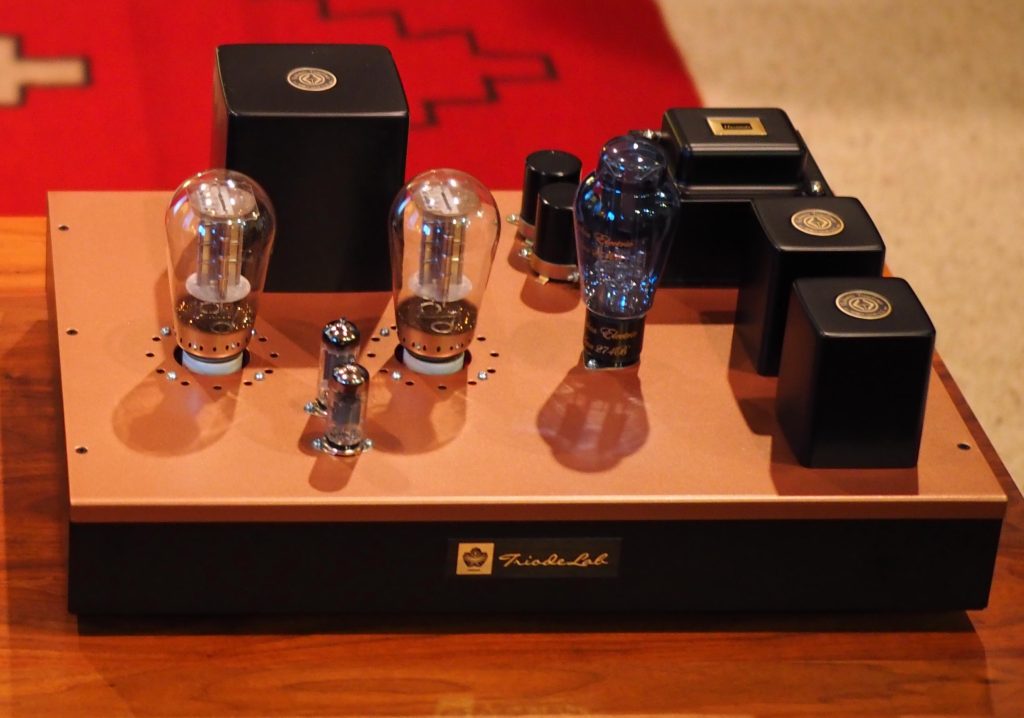
“However, we have proven that a well executed P-SET design like our RSRs overcomes all of those issues, and they sound as good or better than any single-tube SET design, possessing even more of that unique ‘SET magic’ that we all find so attractive.
“Furthermore, other than the circuit design aspect, the output transformers have a direct influence on the sound, because we need the output transformer to do a most important job of impedance matching with the loudspeakers, whether 4, 8, or 16 Ohms.
“For example, with an 8 Ohm loudspeaker load, with a 2A3 in a typical SET configuration, its plate impedance is 800 ohms, and so we need the output transformer to match the impedance to the speakers’ 8 Ohm load. So whether it is the output transformer’s role in the circuit, or in its ability to accurately match to the loudspeaker load, the output transformer has an important influence on the ultimate sound quality.
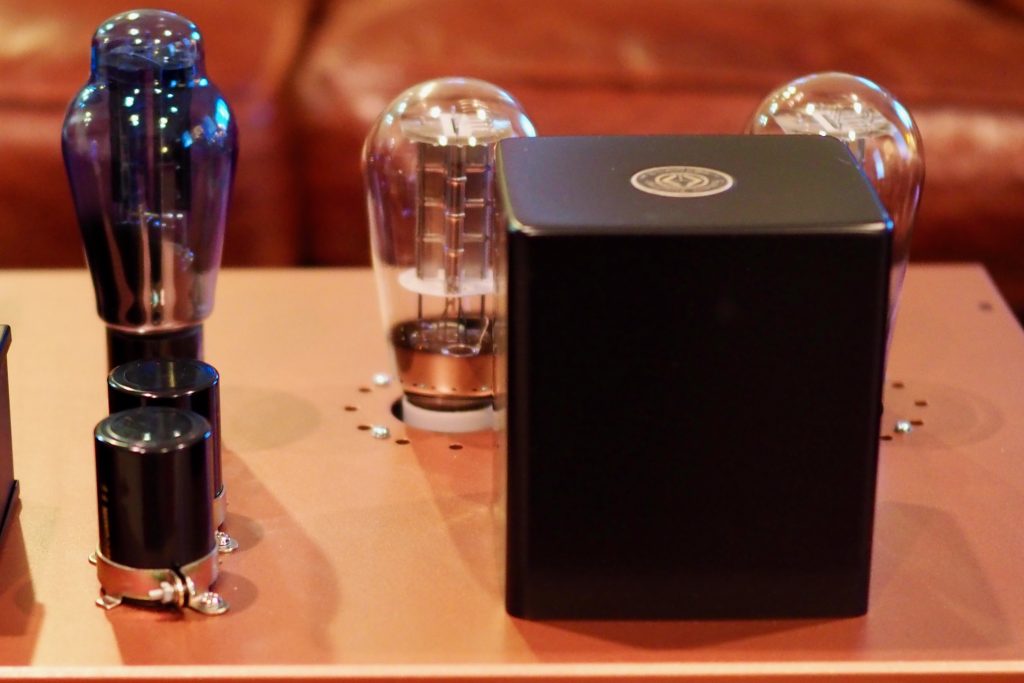
“When you aren't using the best possible quality output transformers you will get a softer, blurred, sounding amplifier, which will be unable to deliver the best sound quality. We are very thankful to the team at Hashimoto who built these custom RSR output transformers to our specifications, which provide the ultimate in performance both in our circuit, and in matching loudspeaker loads.
“The perfect circuit design doesn't become perfect until the power supply is well executed too. Here, we use two chokes, a double choke arrangement to achieve the lowest possible noise. Historically people used two chokes because there were limited choices of small value electrolytic capacitors, but today we use double electrolytic capacitors connected in series and double choke arrangements for higher consistency, enhanced reliability and durability, and for yielding the quietest possible operation, despite more than doubling the cost.
“Given the RSR is a no holds barred design, this approach allows us to achieve ultimate performance. There are a lot of ‘flagship’ amps we have seen over the decades that utilize a basic grade of power supply design. There is nothing wrong with their design, but it does not offer as good of performance as what we can achieve with our design approach in the RSRs. The RSRs are expensive amplifiers because of the high level of design engineering incorporated into them, with custom Hashimoto transformers, doubled chokes & capacitors, etc., but it is absolutely necessary to provide the best engineering possible to achieve this level of performance, and cost is a secondary consideration.”
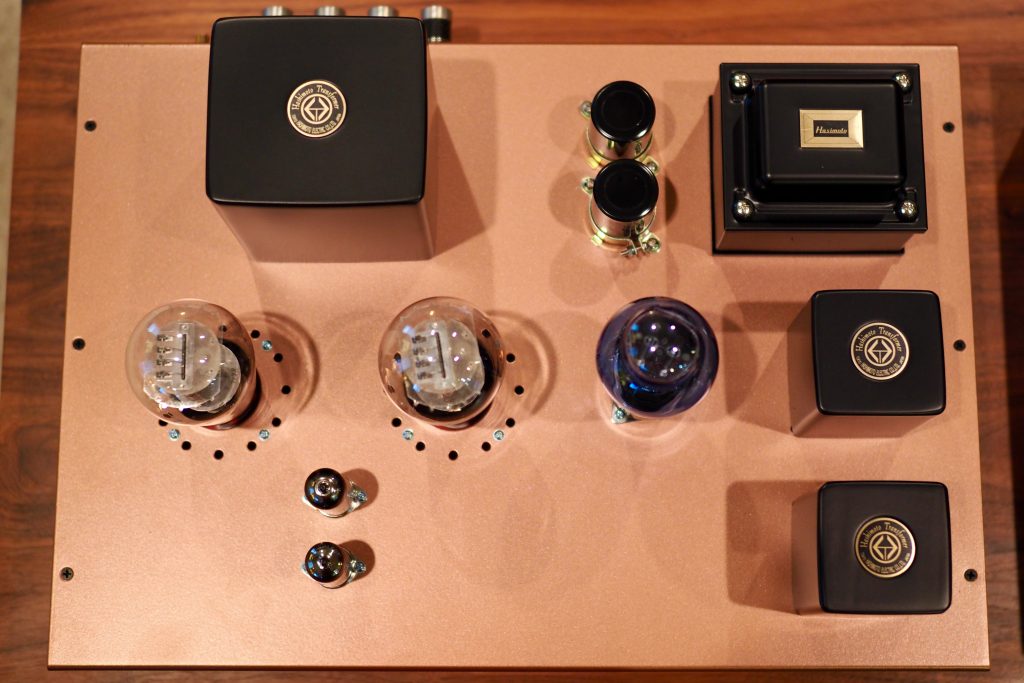
I asked Frank if he would tell us why he chose to go with a parallel 2A3 SET circuit for his statement amplifier instead of a single 300B SET circuit, for example, which would provide a similar level of output power:
“That is a very legit question, one many people ask. To begin with, I must note that the 45, 2A3, and 300B vacuum tubes all have their own unique sound. Some in audiophile circles think that all direct heated triodes have about the same sort of sound quality attributes, but they don’t, they all have their own unique voice.”
Between the 2A3 and 300B direct heated triodes, Frank prefers the sound quality of the 2A3, and notes the 2A3 was designed originally as an audio tube, whereas the 300B was designed more for industrial sound reenforcement purposes, like you see in movie theaters and auditoriums.
Frank feels that the greater linearity of the 2A3, and being able to heat it directly with AC from the power transformer, makes for better overall sound quality, and a more “real sound” than a 300B can achieve.
Frank says an AC heated 2.5V 2A3 will always be quieter than an AC heated 5V 300B, and that AC heated 300Bs are noisy enough that you will hear hum over very sensitive loudspeakers.
Frank says that to overcome the noise limitations of an AC heated 300B, a separate DC power supply stage is needed to provide DC heating, but the down side is that a separate DC power supply stage causes more degradation to the sound quality than simply using AC heating with a 2A3.
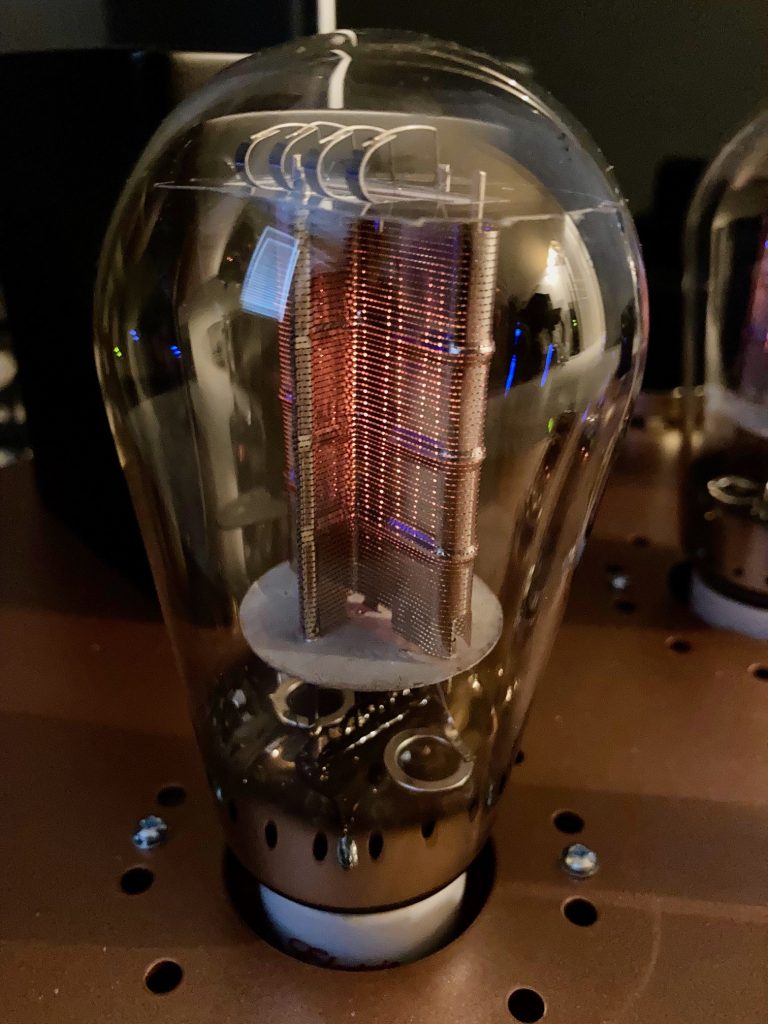
Frank told me he thought the key as to why he thinks the 2A3 is higher performing vacuum tube than the 300B is that it is an easier to drive due to its higher efficiency, and also, the primary impedance needed for a P-SET 2A3 is lower at 1.25-1.75K, versus 3K-5K for a single 300B SET, which makes it more efficient in circuits.
Frank told me, “A typical 300B makes 6-7 watts before distortion occurs, and with a very good output transformer it might reach 8-10W before distortion occurs. When we talk about the output power at Triode Lab, we always use the power measured before distortion occurs. Our P-SET 2A3 RSR can easily provide 8-10 watts before distortion occurs.”
So, to sum up Frank’s preference for a parallel 2A3 SET circuit over a single 300B SET circuit for his state-of-art RSR amplifier, is that when properly implemented - as with the RSR - a parallel 2A3 circuit equals or exceeds the sound quality that a single 300B circuit is capable of, provides approximately equal output power, is more linear, introduces less signal degradation, and gives a more “real sound” quality to the music during listening sessions.
Review System
Tannoy Westminster Royal Special Edition loudspeakers with custom Duelund CAST crossovers served as the loudspeakers for this article. The Westminsters were connected to the Triode Lab 2A3 P-SET RSR monaural amplifiers with Duelund DCA16GA tinned-copper speaker cables.
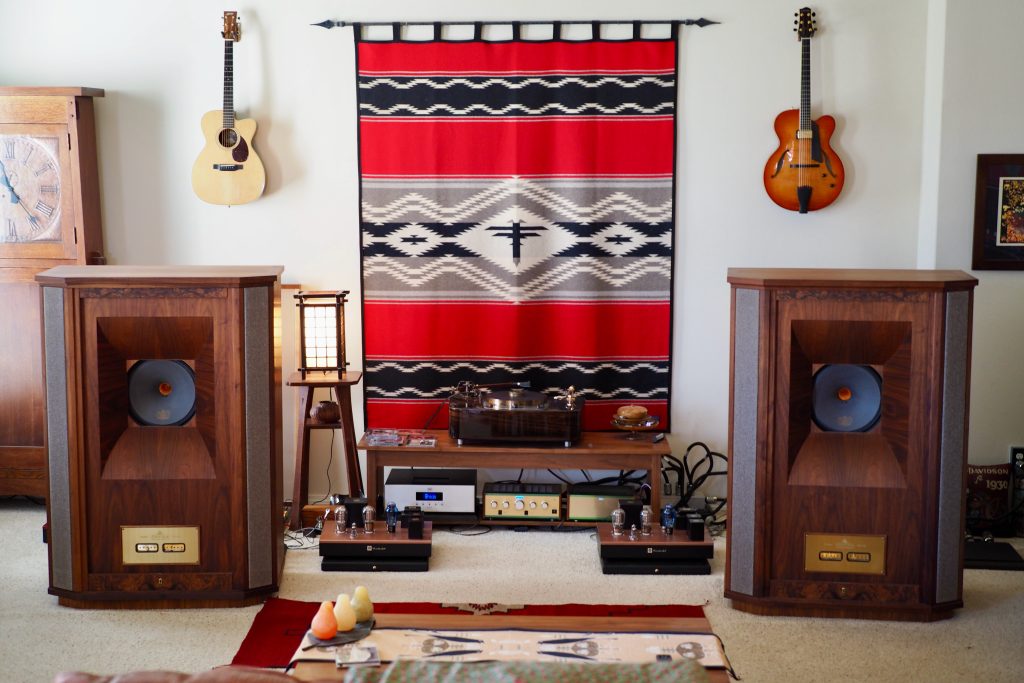
The Triode Lab 2A3 parallel P-SET RSR monaural amplifiers were connected to a Leben RS-100U line level preamplifier with Belden 8402 microphone cable interconnects.
The digital source was the Audio Note (UK) 4.1x CD player (in for review, more HERE), and was connected to the Leben RS-100U preamplifier with Duelund DCA16GA tinned-copper interconnects.
The analog source was my CTC Garrard 301 turntable, fitted with an Artisan Fidelity plinth, Schick tonearm, an Audio Note (UK) Io I MC phono cartridge, AN-S4 step-up transformer, and AN-V silver interconnects connected the AN-S4 SUT to my Leben RS-30EQ phono preamplifier.
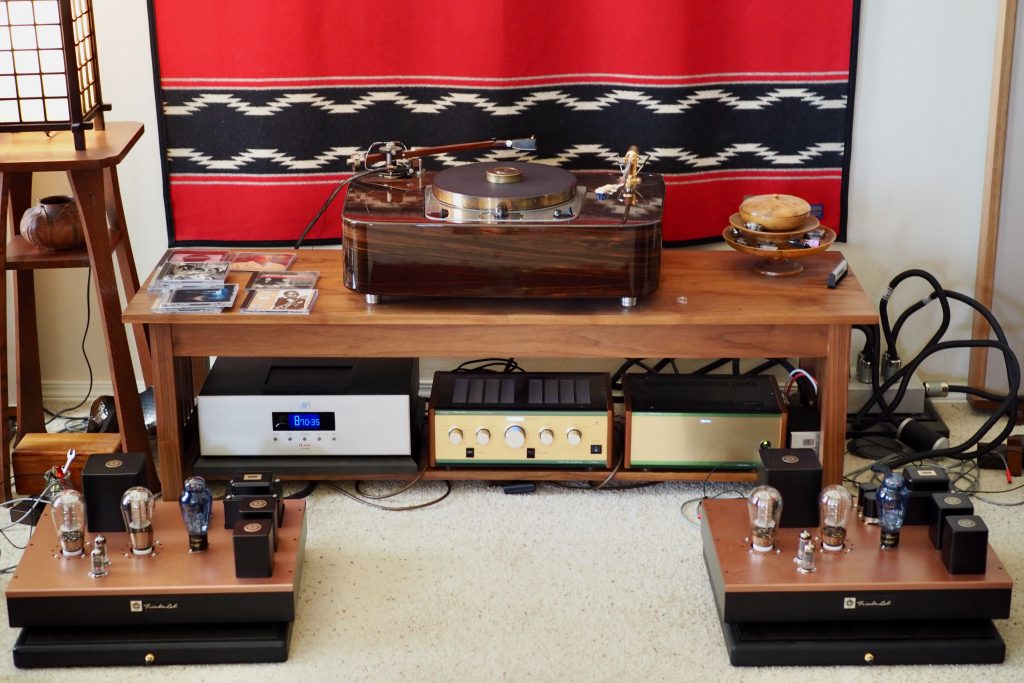
Power cables were Acoustic Revive Absolute (for RSR mono amps), and Acoustic Revive Power Reference TripleC NCF (for Leben RS-30EQ, Leben RS-100U, and Audio Note (UK) 4.1x CD player). All of the power cords were plugged into an Acoustic Revive RPT-6 Absolute NCF Power Distributor, which itself was plugged into wall AC with an Acoustic Revive Absolute power cord. The AC outlet was composed of an Acoustic Revive CB-1DB receptacle base plate, CFRP-1F carbon fiber outlet plate, and an Acoustic Revive modified Oyaide R-1 receptacle.
The above combination of components are what I settled upon while voicing the system using the ‘comparison by contrast’ approach to voicing, where the goal was to optimize the sound quality and musicality across a wide variety of recordings of varied recording quality.
Listening Impressions
That's it for now. I'll let you know when the full article goes live at Positive Feedback.
As always, thanks for stopping by, and may the tone be with you!



























